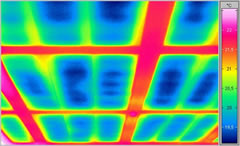Why SoM 2.0 and Networked Learning?
 The Centre for Studies in Advanced Learning Technology (CSALT) at Lancaster University define networked learning as:
The Centre for Studies in Advanced Learning Technology (CSALT) at Lancaster University define networked learning as:"learning in which C&IT is used to promote connections: between one learner and other learners, between learners and tutors; between a learning community and its learning resources. Some of the richest examples of networked learning involve interaction with on-line materials and with other people. But use of on-line materials is not a sufficient characteristic to define networked learning. The interactions between people in networked learning environments can be synchronous, asynchronous or both. The interactions can be through text, voice, graphics, video, shared workspaces or combinations of these forms. Consequently the space of possibilities for networked learning, and the space of potential student experiences, is vast."
This definition would appear to run the risk of diluting the very meaning of learning itself since it would seem that every learning instant is a product of every possible type of interaction a learner may make or encounter. However I believe this dilution is intentional. If it is widely adopted in SoM then it carries with it some important implications concerning how we define our purpose of education. I find a useful mode of unpacking of this belief in my poststructural reading of the definition and is the point of departure for my SoM 1.0/2.0 distinction. The objection (which is redolent of a SoM 1.0 perspective) itself posits learning as an isolated and singular event when, in fact, the CSALT definition deliberately blurs the distinction between (singluar, educationalised, specious) Learning and (dispersed, situated, contingent) learning. The objection saliently posits an individual learner as the locus of learning. The CSALT definition, for me, succeeds in troubling not only this dominant conception of self but also a selection of similarly cherished (modernist and SoM 1.0) notions regarding formal learning that ally with those notions of a singular self; namely, of the notion of proximity to a managed learning environment (either classroom, online or situated in the thick of experience); innocence surrounding the notions of a power over all the stakeholders within a specific learning context; and therefore, by implication, the cherished notion of the learning tutor.
SoM 2.0, by contrast champions a self that is defined and made real by the socius rather than by the psyche; values the basis of learning as the contingencies of desire and/or need (from a group or otherwise) rather than being based around a particular environment (learning or otherwise); positively discriminates the learner over the learnéd; and decentres the tutor (as individual or institution) in favour of the network - its processes and interstices.




